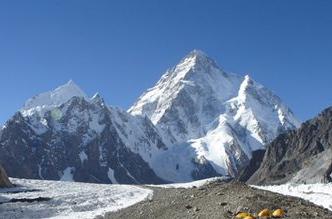
In a groundbreaking study, geophysicists from the Ocean University of China have unveiled compelling findings about the movement of the Indian tectonic plate beneath the Himalayas. The research, presented at the annual meeting of the American Geophysical Union and posted online on ESS Open Archive, indicates that the Indian plate’s shift towards the Eurasian plate is causing significant changes, including a decrease in landmass at a rate of 2mm per year.
The study, led by Ocean University of China geophysicist Lin Liu, suggests that the Indian plate’s movement is not only responsible for the growth of the Himalayas but may also be leading to the potential splitting of Tibet into two separate regions. The geophysicists describe the process as the surface of the plate peeling off, comparable to opening a tin of fish. This phenomenon initiated around 60 million years ago when India collided with Eurasia, giving rise to the highest mountains on Earth.
The research challenges previous beliefs about the complexity of the Himalayan mountain range, indicating that it may be even more intricate than initially thought. The collision with the Eurasian plates is propelling the Himalayas to grow taller.
The study reveals that the rate of collision is faster in oceanic regions compared to land. In areas where oceanic and continental plates collide, the denser oceanic plate slides beneath the lighter continental plate through a process known as subduction. Geophysicists posit that this process may lead to increased earthquake activity in North India, Northeast India, and Tibet.
The analysis is based on the examination of earthquake waves beneath Tibet and the study of gases rising to the surface. “We didn’t know continents could behave this way, and that is, for solid earth science, pretty fundamental,” remarked Douwe van Hinsbergen, a geodynamicist at Utrecht University.
While cautioning about uncertainties and limited data, Fabio Capitanio, a geodynamicist at Monash University, emphasized the significance of the study in providing a snapshot and advancing the understanding of how modern landscapes, particularly the Himalayas, have evolved. A prior study in 2022, focusing on variations in helium gas in the region’s geothermal springs, contributed to mapping the boundary where the two plates currently meet just north of the Himalayas.
The comprehensive insights gained from this study can aid geophysicists in refining earthquake prediction methods and enhancing our understanding of the intricate interactions of tectonic plates.
Sources By Agencies




